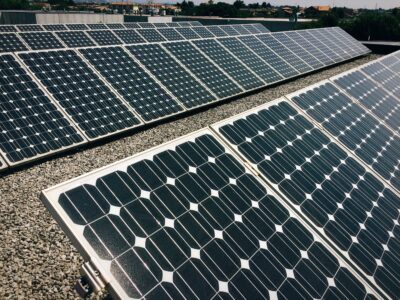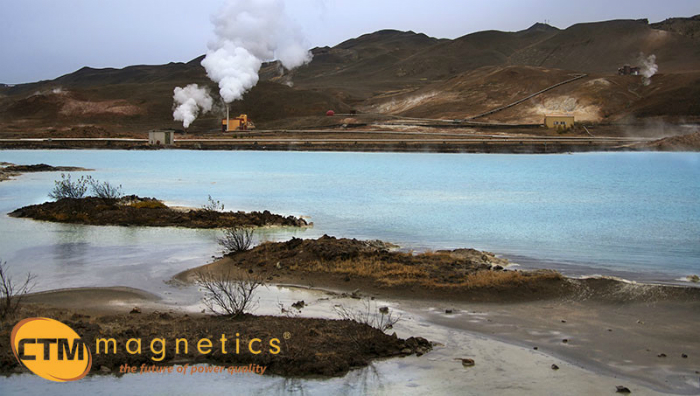Renewable Energy: Take a Detailed Look
Renewable energy is power from a source that is not depleted during use, such as sunlight (solar), wind, water (hydropower, tidal power, wave power), and geothermal. Biomass can also be considered a renewable energy since it can be replenished within a human lifetime.
Renewable energy replaces the use of fossil fuels in myriad areas, including electricity generation, heating, and motor fuel.
Solar
[caption id="attachment_5035" align="alignleft" width="400"] Processed with VSCOcam with q1 preset[/caption]
Processed with VSCOcam with q1 preset[/caption]
The Sun provides a strong source of renewable energy in the form of radiant light and heat. Solar technologies can broadly be defined by the manner in which they collect, convert and distribute solar energy. In passive solar technologies, no mechanical devices or outside energy sources are required to control or regulate the system. Classic examples of passive solar technologies include greenhouses and sunrooms. Passive solar technologies harness heat from the Sun and rely on thermodynamic principles such as conductive, convective and radiative heat transfer to distribute collected thermal energy.
In contrast to passive solar techniques, active solar systems use mechanical devices and external energy sources to collect, convert and distribute solar energy. While active solar systems can be as simple as a passive system with blowers and pumps to increase heat transfer, active solar typically consists of collecting solar energy and converting it into useful electricity.
One of the most prevalent active solar energy technologies is photovoltaic systems. In a photovoltaic solar system, solar panels absorb sunlight and directly convert it into electricity. Typical systems include a solar inverter, which transforms the electrical current from DC to AC. Some systems also include a means for storing energy generated during the day for evening use. Residential applications typically use a batteries to store electrical energy. In commercial applications, numerous energy storage techniques are being evaluated and tested. Batteries and supercapacitors are used to store electrical energy. Molten salts, water, and other mediums are being used to store thermal energy. Some applications are storing energy by pressurizing large cave systems with a compressor during the day, and converting that pressurized air to electricity with a turbine generator.
Wind
Wind as long been used as a renewable energy source. Windmills were originally used to pump water and grind grain. Today, wind turbines are used to generate electricity from wind. Wind passing over the wind turbine blades creates lift, which spins the turbine rotor. The rotary motion of the blades spins an electric generator, which produces electricity.
Turbines can be used in small, single-installation applications as a source of supplemental or backup power. They can also be connected to a power grid to provide electricity for a larger area. A single turbine at a wind farm in Colorado is able to produce 1.5 megawatts of electricity. In addition to producing electricity, turbines are being used to pump water in some applications.
Water
Water wheels are a simple example of using water as an energy source. Water flowing over the wheel turns gears, which creates mechanical power that can be used in many applications, such as grinding grain. By connecting an electric generator to the water wheel, the same flow of water can be used to generate electricity. The Hoover Dam is a well-known example of a hydroelectric power source. The power plant produces approximately 4 billion kilowatt-hours of energy each year.
Ocean tides and waves can also be used as a source of energy. Power from tidal streams is often harnessed. As tides rise and fall, the water movement turns a turbine similar to a wind turbine. Water is a denser medium, providing a larger force on each blade, thereby generating more power.
Geothermal
Geothermal heating and cooling should not be forgotten as an energy source used in many home and business applications. The earth itself can provide the heating and cooling of both the living or working spaces, as well as the heat needed for hot water. This energy pulled from shallow ground or hot water and hot rock beneath the Earth’s surface.
Biomass
[caption id="attachment_5096" align="alignright" width="400"] Peletss Biomass- close up studio shot[/caption]
Peletss Biomass- close up studio shot[/caption]
As a source of renewable energy, biomass is plant or plant-based materials. The energy produce from biological sources can be direct or indirect. Direct energy comes from the heat generated as the materials break down or decompose.
Consider an average backyard compost pile. When the compost is mixed and turned correctly, the pile will generate a considerable amount of heat as the organic materials decay. This same principle is used on a larger scale to generate heat for buildings.
Biomass can also produce gas as it breaks down. The gas can be converted into methane or ethanol for fuel. Biofuels are created by breaking down cellulose into sugar. Biofuels can be burned to produce energy in the form of heat, which is often converted into electricity.
Common biomass sources of renewable energy include wood, rice, corn and soy. Experiments are being done on the use of algae in fuel creation. Algae reproduces at a greater rate than farm crops and is not a source of food, making it an ideal organic material for energy generation.
 " alt="">
" alt="">